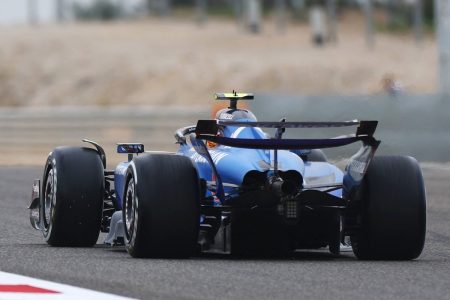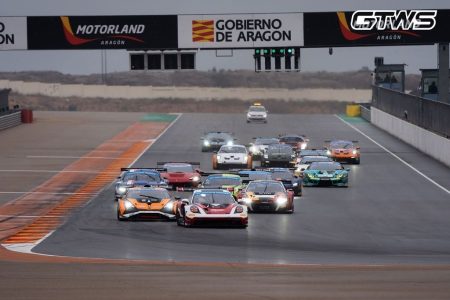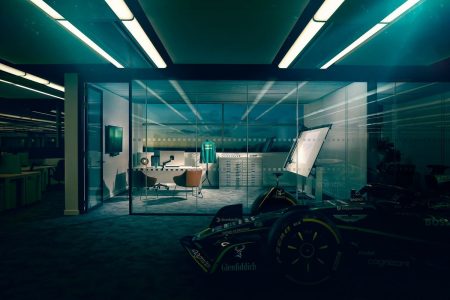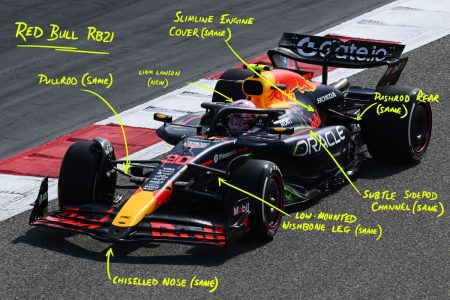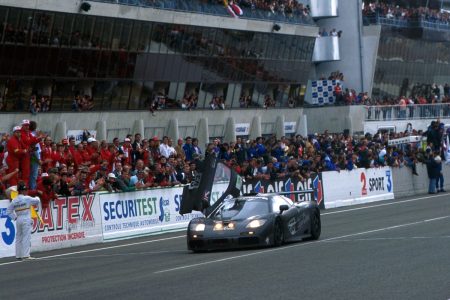Dominant Start Shatters Pre-Race Predictions
A Marc Marquez victory in the Thailand Grand Prix seemed almost inevitable from the moment the MotoGP paddock reconvened in Buriram on Friday. His pole position in qualifying and an outstanding performance in the sprint race only reinforced the belief that he was poised to dominate the opening round of the weekend. On Sunday, Marquez indeed bolted away from pole position, quickly building a 1.4-second lead and setting the fastest lap of the race on the fourth lap. The only rider who could consistently lap in the 1m30s bracket was his younger brother, Alex Marquez, but even he couldn’t keep up with the elder sibling’s pace. The crowd and viewers alike were gearing up for a processional race, with Marquez’s dominance appearing unassailable.
Unexpected Twist in the Race
The race narrative took an unexpected turn on lap 7. Marc Marquez suddenly slowed down at Turn 3, glancing over his shoulder as Alex Marquez sprinted ahead on the following straight. Initially, there was speculation of a technical issue, and the anxious faces at Ducati suggested as much. However, it soon became apparent that whatever problem Marc had was automatically resolved as he quickly picked up speed and settled into a position behind his brother. The race pace dropped significantly, with the two Marquez brothers now managing low 1m31s laps. This puzzled many, but the reason was revealed later: Marc Marquez had intentionally slowed down to keep his tyre pressure within the required limit of 1.8 bars for 60% of the race distance.
Strategic Racing and Tyre Management
MotoGP riders must maintain a tyre pressure of at least 1.8 bars for 60% of a grand prix, a rule that didn’t apply to the sprint race, allowing Marc Marquez to lead from the front without concerns. During the early phases of the grand prix, Marquez found himself continuously running below the required pressure and had no choice but to let his brother take the lead. By running in the dirty air behind Alex, Marc’s tyre pressure increased, keeping him compliant with the regulations. Despite the strategic setback, Marc Marquez timed his final move to perfection, overtaking Alex into Turn 12 on lap 23. His 1m31.228s lap with 24-lap-old tyres, while Alex and Bagnaia were lapping in the 1m32s, was a testament to his skill and experience. He finished 1.7 seconds ahead of his brother, sending a clear message to his rivals that he is back and ready to chase his seventh premier class title, which would tie him with Valentino Rossi.
Alex Marquez’s Historic Debut
While Marc Marquez dominated the headlines, Alex Marquez’s performance was historic in its own right. The 28-year-old, riding for the Gresini team, took second place in what was one of his strongest career showings in the premier class. Despite a strong start in the sprint race and the grand prix, Alex lost out to a fast-charging Francesco Bagnaia and had to fend off Ai Ogura early in the race. However, his consistency and defensive skills were on full display once he took the lead from his brother. For 16 laps, Alex managed the pace and maintained his position with precision. The relentless pressure from Marc eventually took a toll on his front tyre, but he held his ground until the final laps. The 1-2 finish for the Marquez brothers was a significant achievement, showcasing Alex’s ability to compete at the highest level when given a competitive bike.
Ducati’s Mixed Fortunes
Francesco Bagnaia, the factory Ducati rider, secured third place, which was a significant letdown given his recent form and stature in the championship. He had aimed for a second-place finish but found it challenging to match the pace of the Marquez brothers, especially Alex’s steady management of the race. Despite his overnight gains following the sprint race, Bagnaia couldn’t close the gap without risking a front-end slide. Franco Morbidelli, another Ducati rider from the VR46 team, finished fourth, just three seconds off the podium. His performance was a solid recovery from a three-place grid drop, further highlighting Ducati’s strong showing. However, the standout ride came from MotoGP rookie Ai Ogura, who finished fifth for Aprilia, seven seconds ahead of his more experienced teammate Marco Bezzecchi in sixth. Ogura’s performance was a clear indication of his potential and the competitive nature of the Aprilia machine.
KTM and Honda’s Promising Performances
KTM, known for its aggressive riding style, saw varied outcomes with its riders. Pedro Acosta, the team’s new star, crashed out on the fourth lap, leaving Brad Binder to represent the Austrian manufacturer. Binder claimed an impressive eighth place, demonstrating his ability to recover from a mid-race struggle. Enea Bastianini, Binder’s teammate, made a remarkable comeback from 20th on the grid to finish ninth, just two weeks after a disappointing test at the same track. His performance was a testament to his resilience and the potential of the KTM machine. Honda, on the other hand, had a mixed bag. Johann Zarco, riding for Avintia, finished seventh, securing the top spot in the ‘Japanese Cup.’ João Mir, the factory HRC rider, crashed out shortly after the halfway point of the race, leaving Honda to rely on Zarco’s efforts for a strong showing.
Yamaha’s Struggles and Future Prospects
Yamaha faced a challenging day at Buriram. Jack Miller, riding for Pramac, started from fourth on the grid but slid down to 11th place by the end of the race. A “fairing mishap” on lap 16 hampered his performance, pushing him down the order. However, his finish was still the best among Yamaha riders, given the difficulties they encountered. Fabio Quartararo, the factory Yamaha rider, had a particularly tough start, dropping from 10th to 19th in the first two laps. He fought his way back to finish in 15th place, managing to secure the final point of the race. The team’s struggles highlight the need for further development and adjustments to stay competitive in the coming rounds.
Conclusion: A Tale of Resilience and Strategy
The Thailand Grand Prix was a tale of resilience, strategy, and family rivalry. Marc Marquez’s calculated approach to tyre management, despite initial setbacks, proved his tactical acumen and riding prowess. Alex Marquez’s second-place finish was a historic moment, marking a significant achievement in his career. The mixed fortunes of Ducati, KTM, and Honda, along with Yamaha’s struggles, provided a gripping race that kept fans on the edge of their seats. As the season progresses, the Marquez brothers’ performance will undoubtedly be a key focal point, while teams and riders will need to adapt and refine their strategies to keep up with the ever-evolving dynamics of MotoGP.


